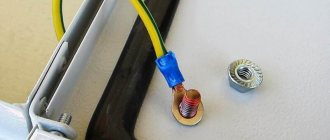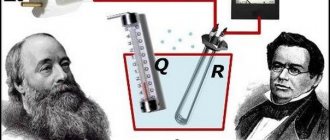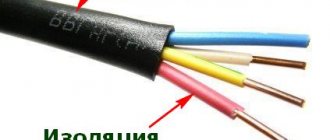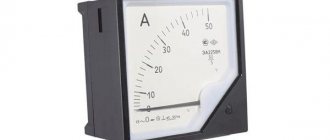When working with electric tools, it is important to know safety precautions. For familiarization and study, symbols have been developed to indicate the possibility of receiving an electric shock. They are applied to various electrical appliances. They show the working personnel or the home craftsman what degree of protection the tool is in question. The article will talk in detail about electrical safety classes of power tools.
Household power tools come in a wide variety
What do classes mean and how are they assigned?
Protection classes are designed for safe work with electric tools. A designer involved in the manufacture of a specific electrical device, even at the initial stages of development, solves certain problems in order to reduce risks when using the tool. We are talking about the use of certain protection, electrical circuits, emergency power outages, and so on.
Depending on the design features, different devices have their own operating conditions. Therefore, they are divided into groups with class assignments, as specified in GOST 12.2.007.0-75.
Information is used both for tools and for electrical installation rules (PUE).
Classification of power tools by type of protection against electric shock.
Power tools are produced in the following classes:
- I - a power tool in which all live parts are insulated and the plug has a grounding contact. For a class I power tool, all parts located can be with basic insulation, and individual parts can be with double or reinforced insulation;
- II - a power tool in which all live parts have double or reinforced insulation. This power tool does not have grounding devices.
The rated voltage of power tools of classes I and II should be no more than: 220V for DC power tools and 380V for AC power tools;
- III - a power tool with a rated voltage not higher than 42V, in which neither the internal nor external circuits are under a different voltage. Class III power tools are designed to be powered from safety extra-low voltage.
What are the main types of electric shock to people?
There are three main types of electric shock:
electrical injuries; electric shocks;
What is an electric sign?
An electric sign is a clearly defined spot (d=1-5mm) of gray or pale yellow color that appears on the surface of human skin exposed to current.
1. What are the characteristics of premises without increased danger?
Premises without increased danger, in which there are no conditions that create increased danger or special danger.
2. How are burns different?
Burns can be: thermal, chemical, electrical.
There are four degrees of burns: I degree is characterized by redness and swelling of the skin, II degree - the formation of water bubbles, III degree - necrosis of the superficial and deep layers of the skin, IV degree - charring of the skin, damage to muscles, tendons and bones.
Procedure for replacing fuses when servicing electrical installations.
Installation and removal of fuses are usually carried out with the voltage removed.
If it is impossible to relieve the voltage, in exceptional cases it is allowed to replace the fuses under voltage, but with the load removed, using insulating pliers, wearing safety glasses and dielectric gloves.
Under load, it is allowed to replace only fuses with a voltage of up to 1000V, closed type (plug type); You should work with dielectric gloves and safety glasses.
4. What is an electrical injury?
Electrical injury is an injury caused by a person being exposed to an electric current or an electric arc. It represents local damage to tissues and organs by electric current: electrical burns, electrical signs, metallization of the skin, damage to the eyes due to the action of an electric arc on them (electro-ophthalmia), mechanical damage.
1. What voltage is called low? Low voltage is a nominal voltage of no more than 42V, used to reduce the risk of electric shock.
2. What are the characteristics of premises without increased danger?
Premises without increased danger, in which there are no conditions that create increased danger or special danger.
What is leather metallization?
Metallization is the penetration of metal particles melted under the action of an electric arc into the upper layers of the skin.
Metallization can occur during short circuits, disconnections of disconnectors and switches under load.
How does the environment affect the risk of electric shock?
The presence in the indoor air of a number of industries producing chemically active and toxic gases that enter the human body reduces the electrical resistance of his body. In humid and damp areas, the skin becomes moisturized, which significantly reduces its resistance. Moisture that enters the skin dissolves the minerals and fatty acids present on it, which are removed from the body along with sweat and sebum, so the skin becomes more electrically conductive.
When working in rooms with elevated ambient temperatures, the skin heats up and increased sweating occurs. Sweat is a good conductor of electric current. Consequently, working in such conditions increases the risk of exposure to electric current to a person. Recent studies have established that the amount of resistance of the human body in such conditions is significantly reduced. It depends both on the duration of stay in an environment with elevated temperature, and on the temperature of this environment and the intensity of thermal loads.
In some cases, the skin is contaminated with various substances that conduct electrical current well, which reduces its resistance. People with such skin are at greater risk of electric shock.
In certain production areas, noise and vibration arise that have a negative effect on the entire human body: blood pressure rises and breathing rhythm is disrupted. These factors, as well as deficiencies in lighting in a number of industries, cause a slowdown in mental reactions, a decrease in attention, which plays an important role in the erroneous actions of personnel and leads to accidents, including electrical injuries.
1. What is electroophthalmia?
Electroophthalmia is an inflammation of the outer membranes of the eyes that occurs under the influence of a powerful stream of ultraviolet rays.
Such irradiation is possible when an electric arc is formed.
Electroophthalmia is detected 2-6 hours after ultraviolet irradiation.
2. What power tools are prohibited from working?
It is prohibited to operate a power tool whose periodic inspection period has expired, or if at least one of the following malfunctions occurs:
- damage to the plug connection, cable or its protective tube;
— damage to the brush holder cover;
— odd operation of the switch;
— sparking of the brushes on the commutator, accompanied by the appearance of a circular fire on its surface;
— leakage of lubricant from the gearbox or ventilation ducts;
— appearance of smoke or smell characteristic of burning insulation;
— the appearance of increased noise, knocking, vibration;
— breakage or cracks in the part body, handle, or protective guard;
— damage to the working part of the tool;
- loss of electrical connection between the metal parts of the housing and the zero protective pin of the power plug.
3. What is an electric shock?
An electric shock is the stimulation of living tissues of the body by an electric current passing through them, accompanied by involuntary convulsive muscle contractions. An electric shock can lead to disruption and even complete cessation of the activity of vital organs - the lungs and heart.
4. What is an electrical burn?
Electrical burns are the most common electrical burns: they occur in the majority of victims (60–65%), and about a third of them are accompanied by other electrical injuries.
There are two types of burns: current (or contact) and arc. Electrical burn occurs as a result of human contact with a live part and is a consequence of the conversion of electrical energy into thermal energy. These burns occur in electrical installations of relatively low voltage - no higher than 1-2 kV, and in most cases they are relatively mild.
An arc burn is caused by exposure to an electric arc of high temperature and high energy on the body. This burn usually occurs in electrical installations with voltages above 1 kV and is usually severe. An electric arc can cause extensive burns to the body, deep burns of tissue, and permanent burning of large areas of the body.
1. What are the characteristics of premises ?
Premises with increased danger are characterized by the presence of one of the following conditions that create increased danger:
a) dampness or conductive dust;
b) conductive floors (metal, earthen, reinforced concrete, etc.)
c) high temperature;
What does the insulation indicator indicate?
When working with any electric tool, heating of the electric motor, which is installed inside the housing, is inevitable. Because of this, the manufacturing material becomes vulnerable, and therefore the manufacturer must use high-quality insulation to ensure safe operation of the device.
Important! Insulation class is a parameter of electrical equipment that characterizes the quality of the winding and an indicator of the engine’s resistance to heat.
The information contained in it is the temperature limit of the specific equipment. If the set value is violated, the electric motor will be damaged.
In which premises it is not allowed to use class 0 power tools?
Class 0 includes any devices operating at voltages above 42 V without grounding. Until recently, all household appliances belonged to this class, because... They are originally intended for use in low-hazard areas. Moreover, it is prohibited to use devices of this class in buildings of the second and third classes without a special housing and protective equipment. Any actions with them are carried out by specially trained people in strict accordance with safety precautions.
To summarize, it should be emphasized that before starting any electrical appliance, you should check for integrity, sensibly assess the situation and the environment, always check the condition of the sockets and monitor the voltage in the network. This will prevent many disastrous consequences that could have been avoided by being vigilant.
Source: pauk.top
Marking of power tools
What markings should a power tool have:
- The first class is three horizontal lines and one vertical, which is located above. The symbols are circled. There is insulation and grounding, as well as a cord for connecting to the mains.
- The second class of power tools is two squares (small inside a large one). There is no grounding, but there is reinforced insulation of components that a person can touch during operation.
- The third class is a rhombus with three vertical lines. There is no grounding, the equipment operates on 42 V (the most electrically safe power tool belongs to this class).
Markings are simple and easy to remember.
The need for additional insulation and grounding
Intersectoral rules on labor protection.
Currently, power tools of classes “0” and “01” are allowed to be used only if they are built into another device that has a grounded housing. Equipment of class “1” is marked with a grounding symbol (there are three horizontal lines in a circle and one vertical line above them). Intended for use only in industrial conditions, with the exception of particularly hazardous areas. For safety reasons, it is necessary to use at least one of the insulating means: rubber gloves, a mat or shoes. You can do without them only in cases where the instrument is connected through auxiliary equipment (isolating transformer, frequency conversion device, RCD).
Read also: Repair of LED lamps blinking
Equipment of class “2” does not require grounding, since, in addition to the main insulation of the power tool, it has additional, autonomous insulation of its individual components and parts. It is called double, and reinforced implies an insulation level no less than double. The products are marked in the form of 2 squares, one inside the other. They can be used without the use of additional protection. The exception is objects with particular danger: wells and metal tanks. In them, operational safety requires the presence of at least one of the dielectric protective equipment. Products of class “3” are marked in the form of 3 vertical stripes inside a diamond. They can be used anywhere and without restrictions.
Classes of electrical tools according to GOST
The list includes power tools that have a cable for connecting to the network. This is a hose type equipped with protection against damage to the insulation.
There are 3 classes or varieties:
- First class with grounding conductor. Tool for work in production. You will have to use gloves, a mat or special shoes. This type of equipment is prohibited in frequent use.
- Equipment for the most dangerous premises. The employee must wear dielectric gloves.
- The third class is work in the most dangerous areas without the use of protective equipment.
Important! Any employee can work with devices if they have permission.
Classification by method of operation
- Battery-type power tools will be classified as hand tools. These are safety, ergonomics, transportability and often intuitive use. Its disadvantages include limited battery life and low power.
- Stationary tools are, firstly, those that are connected to the network (although in operation they are no different from manual ones), and secondly, those that are presented on machines; They are used in production, and without a certain degree of qualification it is impossible to work on them. Both have greater power, hardware precision and efficiency.
Protection classes
Categories are created depending on the parameters of a specific device and area of use.
electrical safety
Special conditions must be arranged for work.
How are power tools classified according to the method of protection against electric shock - room standards:
- Low degree of danger is an area where the air temperature does not rise above 30 degrees. There are no particles of chemical elements.
- Premises where one of the conditions is not met.
- Objects where there is high humidity and air temperature rises above 35 degrees.
Important! The most harmless classification of a power tool based on its electrical safety is 0. It is these devices that are best used by ordinary people in everyday life.
Power classification
The characteristic indicates how long the tool can function without interruption:
- Industrial. This is a portable tool that operates for 15 hours. Electrical safety data is very low.
- Heavy Duty. Similarly, but water and dust will not get inside.
- Profesional - the highest safety requirements.
For household use, it is necessary to purchase tools from the “Hobby” variety (from the Latin Hobby). They operate for approximately 30 minutes without recharging and have a high level of safety.
How to classify by application
There are three categories:
- Tool for creating holes.
- Polishing.
- Cutting materials.
A separate type is for auxiliary tools.
According to working method
There are only two types in this category:
- Cordless products, also called hand tools.
- Stationary tools that operate from the network.
Important! Stationary machines cannot be used at home, since the operator requires qualifications.
Penetration of various objects into the body
The classification of power tools also takes into account the touches of the master during operation:
- 0—no protection required.
- 1 - protection from solid objects with a diameter of over 50 mm and it is not possible to get inside with your hands.
- 2 - diameter 12.5 mm and protection against penetration by fingers.
- 3 - diameter 2.5 mm and protection against penetration of various tools.
- 4 - diameter 1.0 mm and protection against ingress of wires.
- 5K - complete insulation from sand and wires.
- 6K - insulation from dust and wires.
The points are important to learn because they show exactly where a particular device can be used.
Classification by safety level
There are 3 types of security:
- “0” is the rated voltage, insulation is required.
- “01” - high-quality insulation and grounding available.
- “02” - additional insulation (double) in places where contact is possible.
- “03” - tools with scarlet power (45 V).
Important! If you need to find out which classes of power tools are not grounded, then this is option “03”.
How is resistance to heat classified?
Designations are in Latin letters:
- Y - very low indicator (winding made of silk or cellulose).
- A - limit 105 °C (same winding, but with processing).
- E - 120 °C (resin winding).
- C - 180 °C (the winding is made of durable materials, including ceramics, mica, glass).
Groups apply to all instruments.
Insulation resistance to overheating
. This is a very important and serious parameter, since it characterizes the temperature that the electric motor can withstand during operation. Cellulose and silk are the least resistant to heat.
Portable devices
The following types are available in this category:
- Zero - without grounding.
- The first is with grounding.
- The second one has a high level of insulation.
The last category includes tools with low voltage.
Power classification
This is not about how loud the hammer hammer is and whether you can hear an electric saw at the other end of the village. Power is the very characteristic that determines the ability of a tool to work for a long time, without stopping and overheating. How important this is depends on the tasks assigned to the equipment and the conditions of its operation.
- Industrial and Heavy Duty are classes of portable power tools that cannot be found on store shelves. These are not just professional units that are used by craftsmen from the housing and communal services sector or “hourly” craftsmen. They work without a break for 16 hours, have reduced safety indicators, as they are intended for the work of professionals.
- Heavy Duty have all the same characteristics and, in addition, increased dust and moisture protection and the ability to use equipment and components from other models. In other words, the “heavy artillery” among electrical equipment.
- Professional as a class is found on the shelves of specialized shopping centers. Their safety requirements are already higher, since they are known to be used by less qualified operators. They can be approved for use in harsh conditions, and also expand their “specialization” - for this purpose, the kit often includes replaceable nozzles and other components. The target audience of this class is craftsmen working on call or in small production on one shift.
- Hobby is a class of equipment that usually sits in a drawer for weeks and is taken out for small household needs: repairs or handicraft making items. It is allowed to operate only with care; it is not allowed to use it for more than half an hour: you should take a 15-minute break. A big plus is the high safety indicator for non-professionals.
Decoding
Marking. What you should pay attention to:
- Y - low indicator, heating no more than 90 ° C, cotton winding.
- A - the same parameters, but the winding has been processed.
- E - resin winding, maximum heating temperature 120 °C.
- B - the winding is made of mica.
- F - synthetic winding.
It is important to pay attention to these markings because if the heating process is not controlled, the equipment may catch fire and cause injury to the operator.
Classification by heat resistance
The lower this class, the more often you will have to stop the device to cool it down (20 minutes of operation after a 15-minute break is the optimal value for power tools; as the class increases, the operating time also increases).
The heat resistance itself depends on the winding material.
| Class | Winding materials | Maximum t |
| Y | Cellulose or silk | 90⁰C |
| A | Cellulose or silk with dielectric treatment | 105 ⁰C |
| E | Resin and organic film | 120⁰C |
| B | Mica | 130 ⁰C |
| F | Synthetic materials or asbestos | 155 ⁰C |
| H | Silicone impregnated elastomers and fiberglass | 180⁰C |
| C | Mica, ceramics, glass, quartz with inorganic processing | 180⁰C |
Use of devices if its protection class is known
There is a clear set of recommendations and rules that must be followed to safely work with an electrical device. For example, if a tool belongs to “0” or “01” class, then it is not used without grounding. First class can only be used in production with gloves or a rubber mat.
Rubber mat
No additional safety measures will have to be observed when working with class 2 equipment, except when work is performed inside tanks or wells.
The third class is suitable for any conditions.
Classification by purpose
The most common division of tools for us is based on the type of work that needs to be done.
- To create holes (drilling or boring), you will need drills (cordless or impact), jackhammers, and rotary hammers.
- To grind and polish surfaces, you need files, wall chasers, planes, as well as specialized grinding and polishing machines.
- Circular and miter saws, milling cutters, and grinders are used for cutting edges and cutting materials.
- And finally, a separate class of tools includes auxiliary tools: guns (glue guns, soldering guns and for tying reinforcement), construction vacuum cleaners and hair dryers, dust collectors, spray guns, mixers for mixtures and solutions.
Washing machines
To calculate the energy efficiency of washing machines, one cycle is taken in the “Cotton” mode at 60° and a maximum load of laundry. However, the table itself shows kWh per 1 kg of laundry. Therefore, you can calculate exactly how much energy your machine will take by multiplying the indicators from the table by the weight of the laundry being washed.
| A+++ | A++ | A+ | A | B | C | D | E | F | G |
| <0,13 | 0,13 — 0,15 | 0,15 – 0,17 | 0,17 – 0,19 | 0,19 – 0,23 | 0,23 – 0,27 | 0,27 – 0,31 | 0,31 – 0,35 | 0,35 – 0,39 | >0,39 |
But does it really make sense to buy a washing machine that is a little more expensive, but with a higher energy efficiency class? For comparison, let's take two inexpensive and almost identical models Beko WRS 55P1 and Beko WRS 55P2 . The sizes, volume of laundry and washing and spinning classes are the same. But the energy efficiency class of the first is A++, and the second is A.
Let's assume we wash once a week with a load of 5 kg. Then the consumption for Beko WRS 55P1 per year will be: 0.15*5*52 (number of weeks per year) = 39 kWh . According to Moscow tariffs, this will be 39 * 5.47 = 213 rubles.
For Beko WRS 55P2 the consumption will be: 0.19*5*52 = 50 kWh . According to Moscow tariffs, this will be 50 * 5.47 = 273 rubles.
That is, the difference in payment for the year will be only 60 rubles. Considering that Beko WRS 55P1 costs 500 rubles more, its payback in relation to the second one will be approximately 8 years. As you can see, the difference is not fundamental at all, so it’s not particularly worth pursuing class A++ or A+++.
Requirements for professional power tools
Stripper - a tool for stripping wire insulation
The name “professional instrument” obliges EI to meet certain requirements:
- Sufficient power.
- Compliance of the unit’s capabilities with its intended purpose.
- Maximum performance in any type of operation.
- Ensuring the required level of electrical safety.
- High resistance to engine overheating.
- The highest degree of tightness of the unit housing.
Universal devices
Tool for crimping rj 45 connectors
Universal units include EI, which combine the functions of several types of tools. The hammer drill is an example of this. The mode switch has three positions. By installing it in a certain position, the unit can be “forced” to work like a hammer drill, drill or jackhammer. By replacing the abrasive wheel with a saw blade, the sander can be used as a circular saw. A screwdriver is often used to drill holes.
Additional Information. When looking at EI ratings, you need to treat them with some caution. They are often created by companies interested in promoting their group of products on the electrical engineering market. Before purchasing a tool, you must check whether its capabilities correspond to the declared characteristics in the accompanying documentation.
Procedure for storing protective equipment
The effectiveness of electrical protective equipment depends on many factors, including compliance with the rules for their storage. In this case, the following mandatory requirements must be met:
- it is necessary to store protective equipment indoors, in conditions that ensure their serviceability and suitability for use;
- protective equipment made of rubber and polymeric materials are stored in cabinets or on racks separately from the tools and be protected from the effects of acids, alkalis, oils, etc., as well as from exposure to sunlight and thermal radiation from heating devices;
- protective equipment is placed in specially equipped places at the entrance to the premises, on control panels.
It should also be noted that protective equipment can only be stored in dry form.
Benefits of professional tools and power tools
The advantages of professional tools include:
- high-quality assembly;
- long period of continuous operation;
- no need to regularly check power tools;
- high reliability;
- convenient and designer ergonomics of the device;
- long service life without repair.
The desire to purchase a professional tool for household needs leads to unnecessary waste of money. It is necessary to balance the needs for a certain type of EI with its planned use.










